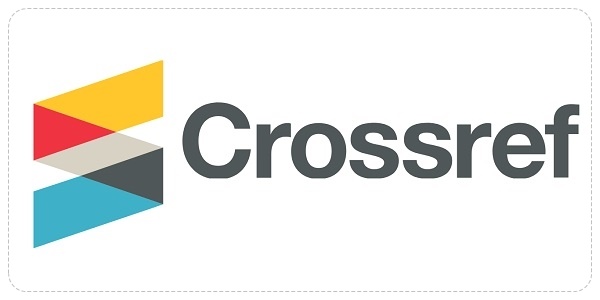BULLYING DI SEKOLAH : PENGERTIAN, DAMPAK, PEMBAGIAN DAN CARA MENANGGULANGINYA
Abstract
Abstrak
Kasus bullying banyak terjadi di Indonesia yang mana melibatkan siswa sekolah. Hal itu menghambat proses belajar siswa sekolah. Penelitian bertujuan untuk mengetahui pengertian, dampak, pembagian dan cara menanggulangi bullying. Penelitian menggunakan pendekatan studi literature mengenai teori dasar, dampak, pembagian dan cara menanggulangi bullying. Definisi bullying mengacu pada Olweus (1999), yang mendefinisikan bullying sebagai masalah psikososial dengan menghina dan merendahkan orang lain secara berulang-ulang dengan dampak negatif terhadap pelaku dan korban bullying di mana pelaku mempunyai kekuatan yang lebih dibandingkan korban. Sejalan dengan kemajuan teknologi, bullying tidak hanya terjadi secara face-to-face, namun juga terjadi pada platform media sosial. Beberapa praktisi pendidikan bisa menanggulangi dampak bullying dan meminimalisir angka bullying dengan beberapa program intervensi terhadap siswa sekolah dengan melibatkan orang tua, teman sebaya, pendidik, konselor sekolah, administrator sekolah, dan warga sekolah.
Abstract
Bullying cases occur a lot in Indonesia, which involves school students. That hinders their learning process. The research aims to determine the understanding, impact, distribution and ways of overcoming bullying. The study uses a literature study approach on the basic theory, impact, division and ways to overcome bullying. The definition of bullying refers to Olweus (1999), which defines abuse as a psychosocial problem by repeatedly humiliating and demeaning others with negative impacts on abusers and victims of abuse where the perpetrator has more power than the victim. In line with technological advances, bullying does not only occur face-to-face, but also occurs on social media platforms. Some education practitioners can overcome the effects of bullying and minimize the number of bullying with several intervention programs for school students by involving parents, peers, educators, school counselors, school administrators, and school residents.
Keywords
Full Text:
PDF (Bahasa Indonesia)References
Angold, A., Erkanli, A., Copeland, W., Goodman, R., Fisher, P. W., & Costello, E. J. (2012). Psychiatric diagnostic interviews for children and adolescents: a comparative study. Journal of the American Academy of Child & Adolescent Psychiatry, 51(5), 506-517.https://doi.org/10.1016/j.jaac.2012.02.020.
Barlett, C., & Coyne, S. M. (2014). A meta-analysis of sex differences in cyber-bullying behavior: The moderating role of age. Aggressive Behavior, 40, 474–488. doi:10.1002/ab.21555.
Casas, J. A., Del Rey, R., & Ortega-Ruiz, R. (2013). Bullying and cyberbullying: Convergent and divergent predictor variables. Computers in Human Behavior, 29(3), 580-587. https://doi.org/10.1016/j.chb.2012.11.015.
Cornell, D., Gregory, A., Huang, F., & Fan, X. (2013). Perceived prevalence of teasing and bullying predicts high school dropout rates. Journal of Educational Psychology, 105(1), 138. DOI: 10.1037/a0030416.
Duncan, N. (2012). Sexual bullying: Gender conflict and pupil culture in secondary schools. London: Routledge.
Dupper, D. R. (2013). School bullying: New perspectives on a growing problem. New York, NY: Oxford University Press.
Komisi Perlindungan Anak Indonesia. (2016). Rincian Data Kasus Berdasarkan Klaster Perlindungan Anak, 2011-2016 [Tabel Ilustrasi KPAI Juli 17, 2016]. Retrieved from http://bankdata.kpai.go.id/tabulasi-data/data-kasus-per-tahun/rincian-data-kasus-berdasarkan-klaster-perlindungan-anak-2011-2016.
Kowalski, R. M., & Limber, S. P. (2013). Psychological, physical, and academic correlates of cyberbullying and traditional bullying. Journal of Adolescent Health, 53, S13–S20.
Kowalski, R. M., & Morgan, M. E. (2017). Cyberbullying in Schools. The Wiley Handbook of Violence and Aggression, 1-12.
Kowalski, R. M., Giumetti, G. W., Schroeder, A. W., & Lattanner, M. R. (2014). Bullying in the digital age: A critical review and meta-analysis of cyberbullying research among youth. Psychological Bulletin, 140, 1073–1137. doi:10.1037/a0035618
Kowalski, R. M., Limber, S. E., & Agatston, P. W. (2012). Cyberbullying: Bullying in the digital age (2nd ed.). Malden, MA: Wiley-Blackwell.
Kowalski, R. M., Morgan, C., & Limber, S. (2012). Traditional bullying as a potential warning sign of cyberbullying. School Psychology International, 33, 505–519. doi:10.1177/0143034312445244.
Kwan, G. C. E., & Skoric, M. M. (2013). Facebook bullying: An extension of battles in school. Computers in human behavior, 29(1), 16-25.https://doi.org/10.1016/j.chb.2012.07.014.
Lereya, S. T., Samara, M., & Wolke, D. (2013). Parenting behavior and the risk of becoming a victim and a bully/victim: A meta-analysis study. Child abuse & neglect, 37(12), 1091-1108. https://doi.org/10.1016/j.chiabu.2013.03.001.
Limber, S., Kowalski, R. M., Agatston, P., & Huynh, H. (2016). Bullying and children with disabilities. In B. Spodek & O. Saracho (Eds.), Research on bullying in early childhood education (pp. 129–155). New York, NY: Information Age.
Limber, S., Kowalski, R. M., & Agatston, P. (2014a). Cyber bullying: A prevention curriculum for grades 3–5 (2nd ed.) Center City, MN: Hazelton.
Limber, S., Kowalski, R. M., & Agatston, P. (2014b). Cyber bullying: A prevention curriculum for grades 6–12 (2nd ed.) Center City, MN: Hazelton.
Menesini, E., Nocentini, A., & Camodeca, M. (2013). Morality, values, traditional bullying, and cyberbullying in adolescence. British Journal of Developmental Psychology, 31(1), 1-14. DOI:10.1111/j.2044-835X.2011.02066.x.
Modecki, K. L., Minchin, J., Harbaugh, A. G., Guerra, N. G., & Runions, K. C. (2014). Bullying prevalence across contexts: A meta-analysis measuring cyber and traditional bullying. Journal of Adolescent Health, 55(5), 602-611.https://doi.org/10.1016/j.jadohealth.2014.06.007.
Olweus, D. (1999). Sweden. The nature of school bullying: A cross-national perspective. London & New York: Routledge.
Olweus, D. (2012). Cyberbullying: An overrated phenomenon? European Journal of Developmental Psychology, 9, 520–538. doi:10.1080/17405629.2012.682358.
Rosen, L. H., DeOrnellas, K., & Scott, S. R. (2017). Bullying in School: Perspectives from School Staff, Students, and Parents. Texas: Springer.
Schott, R. M., & Søndergaard, D. M. (Eds.). (2014). School bullying: New theories in context. Cambridge University Press.
Simon, P., & Olson, R. (2014). Building capacity to reduce bullying. Washington, DC: Institute of Medicine / National Research Council.
Skrzypiec, G. K., Slee, P. T., Askell-Williams, H., & Lawson, M. J. (2012). Associations between types of involvement in bullying, friendships and mental health status. Emotional and Behavioural Difficulties, 17(3–4), 259–272. doi:10.1080/13632752.2012.704312.
Slee, P. T., & Skrzypiec, G. (2016). Well-being, positive peer relations and bullying in school settings. Dordrecht, The Netherlands: Springer. DOI 10.1007/978-3-319-43039-3.
Smith, P. K., del Barrio, C., & Tokunaga, R. (2012). Definitions of bullying and cyberbullying: How useful are the terms? In S. Bauman, D. Cross, & J. Walker (Eds.), Principles of cyberbullying research: Definition, measures, and methods (pp. 29–40). Philadelphia, PA: Routledge.
Sticca, F., & Perren, S. (2013). Is cyberbullying worse than traditional bullying? Examining the differential roles of medium, publicity, and anonymity for the perceived severity of bullying. Journal of youth and adolescence, 42(5), 739-750.DOI 10.1007/s10964-012-9867-3.
Takizawa, R., Maughan, B., & Arseneault, L. (2014). Adult health outcomes of childhood bullying victimization: evidence from a five-decade longitudinal British birth cohort. American journal of psychiatry, 171(7), 777-784. https://doi.org/10.1176/appi.ajp.2014.13101401.
Vannucci, M., Nocentini, A., Mazzoni, G., & Menesini, E. (2012). Recalling unpresented hostile words: False memories predictors of traditional and cyberbullying. European Journal of Developmental Psychology, 9, 182–194. doi:10.1080/17405629.2011.646459.
Waasdorp, T. E., & Bradshaw, C. P. (2015). The overlap between cyberbullying and traditional bullying. Journal of Adolescent Health, 56(5), 483-488.https://doi.org/10.1016/j.jadohealth.2014.12.002.
Wolke, D., Copeland, W. E., Angold, A., & Costello, E. J. (2013). Impact of bullying in childhood on adult health, wealth, crime, and social outcomes. Psychological science, 24(10), 1958-1970. https://doi.org/10.1177/0956797613481608.
Ybarra, M. L., Boyd, D., Korchmaros, J. D., & Oppenheim, J. K. (2012). Defining and measuring cyberbullying within the larger context of bullying victimization. Journal of Adolescent Health, 51(1), 53-58.
DOI: https://doi.org/10.17509/pdgia.v17i1.13980
Refbacks
- There are currently no refbacks.
INDEXED BY

This work is licensed under a Creative Commons Attribution-ShareAlike 4.0 International License















